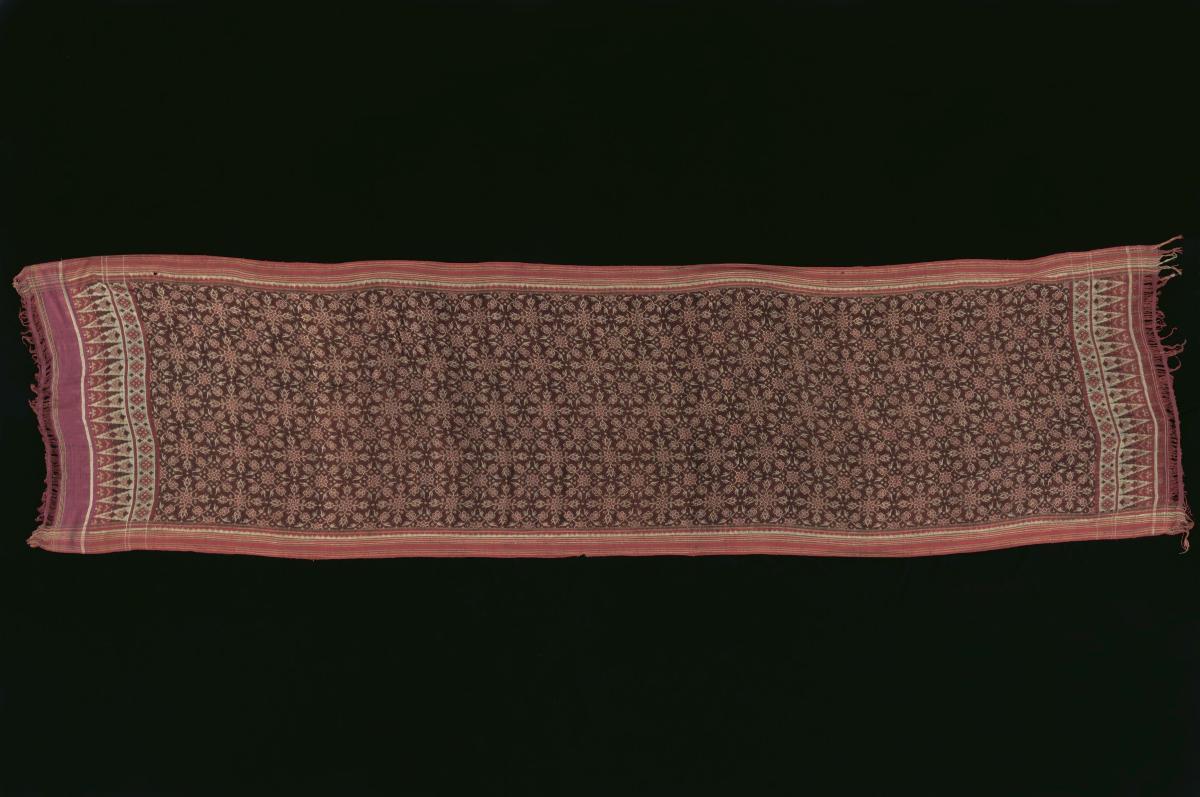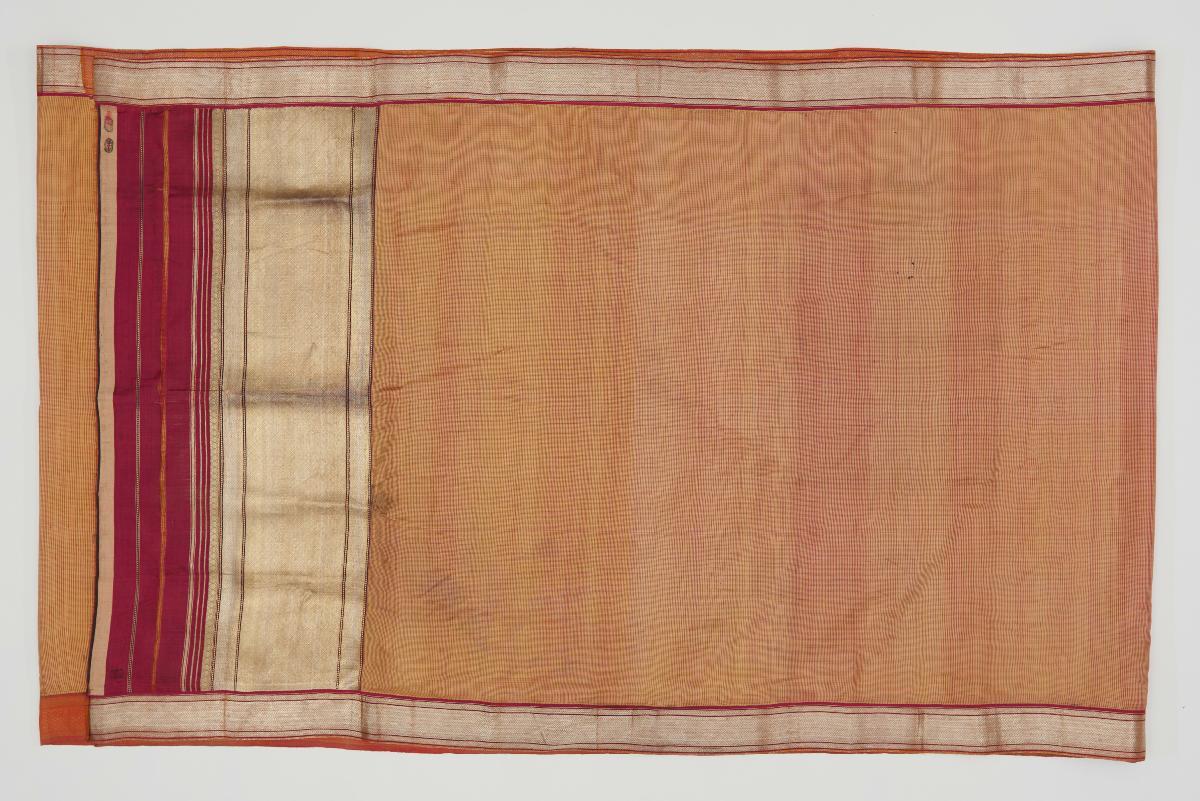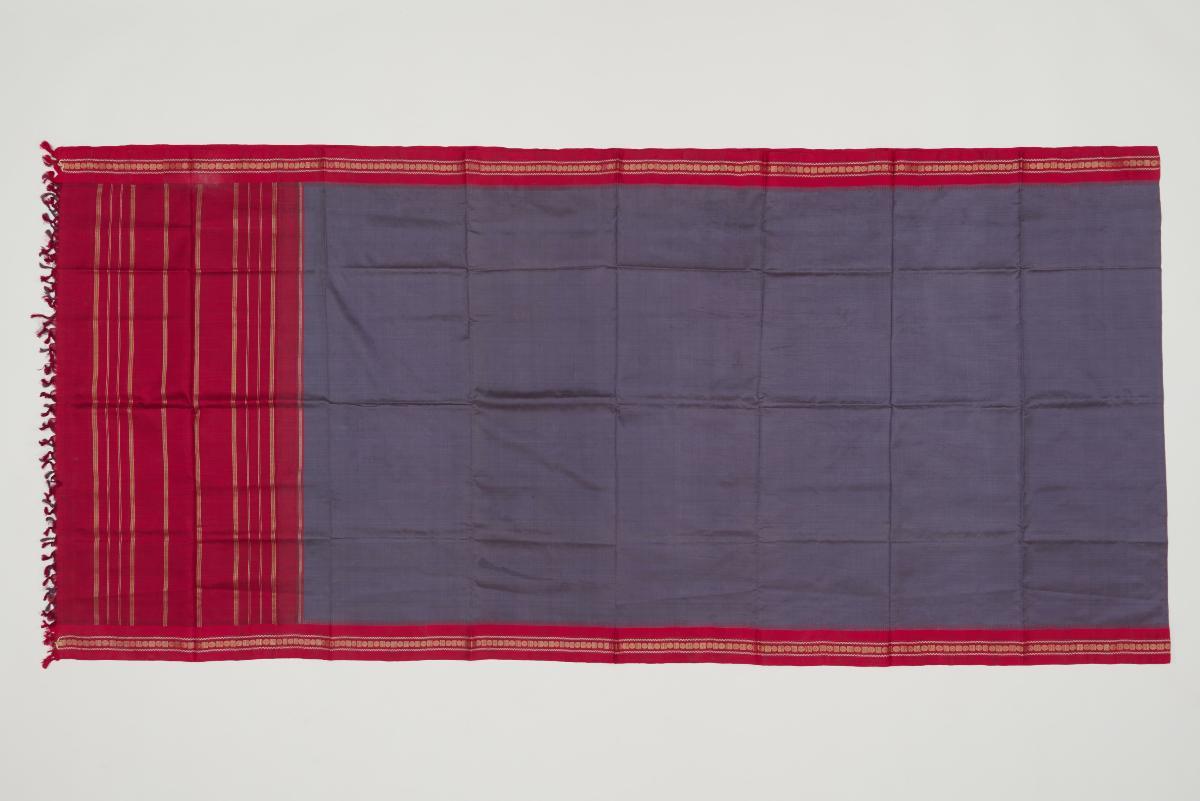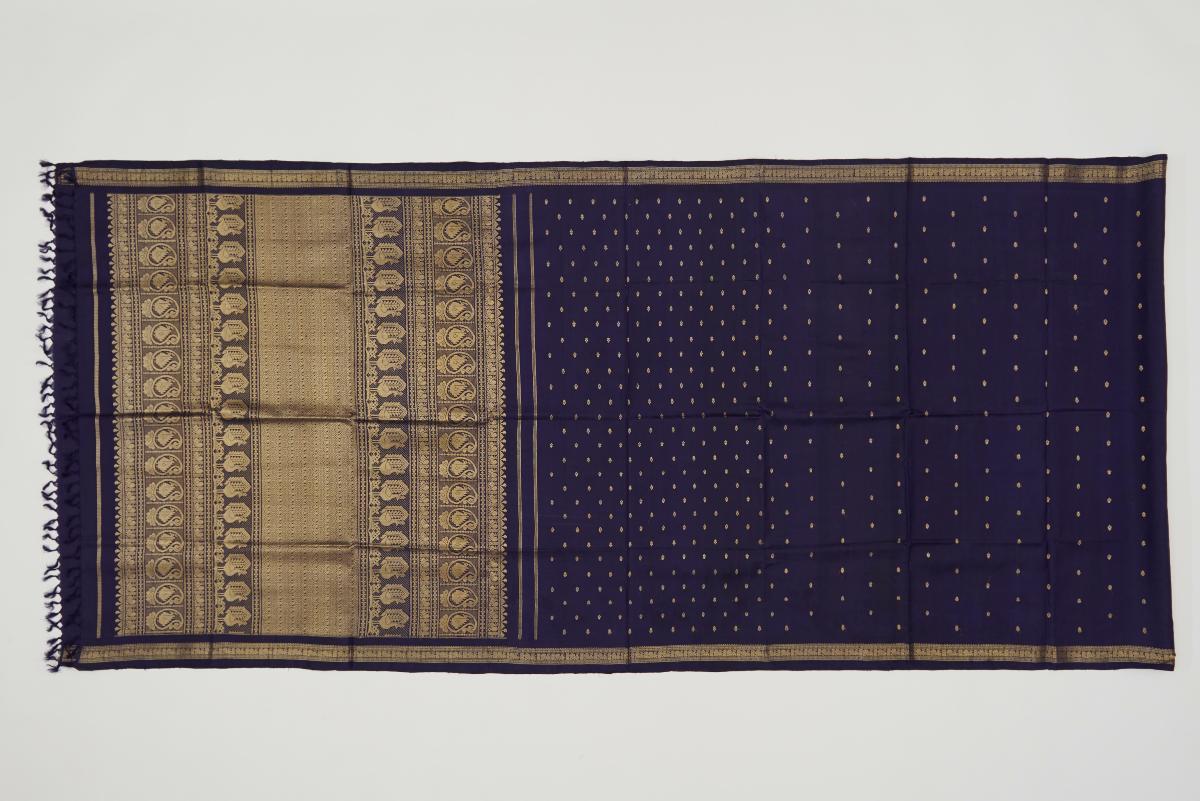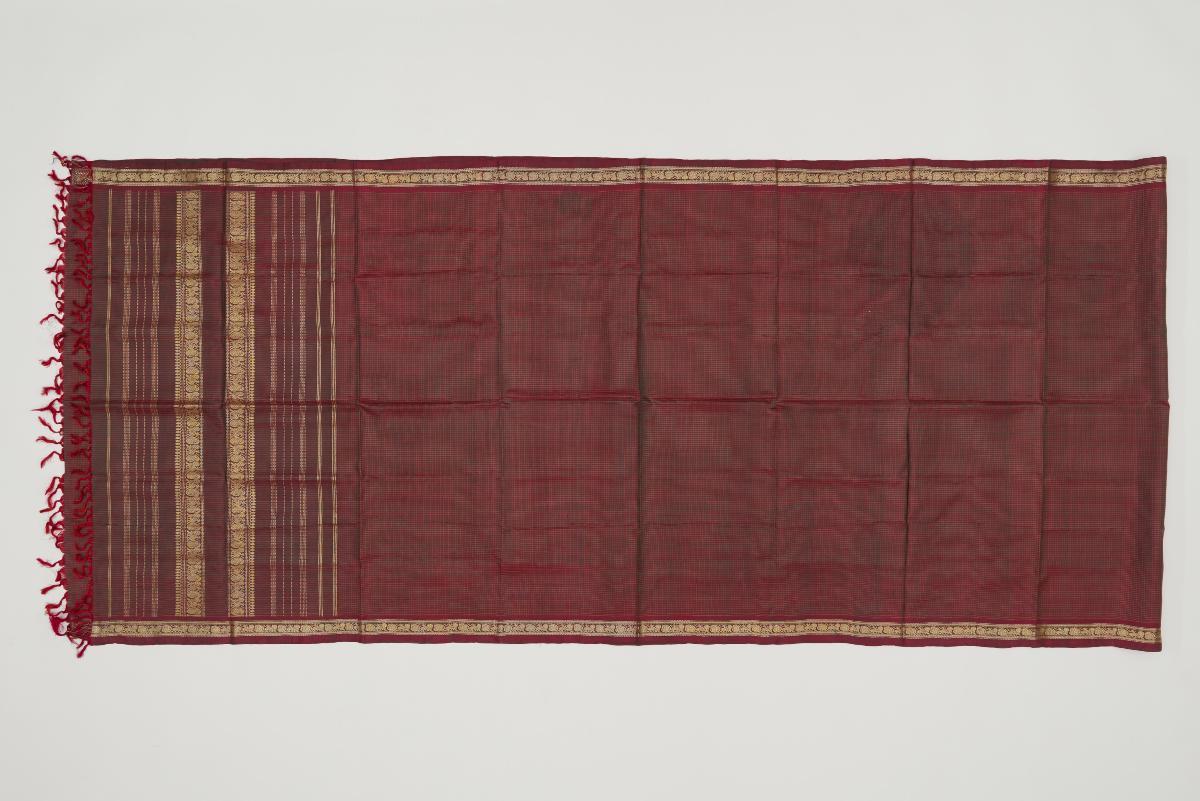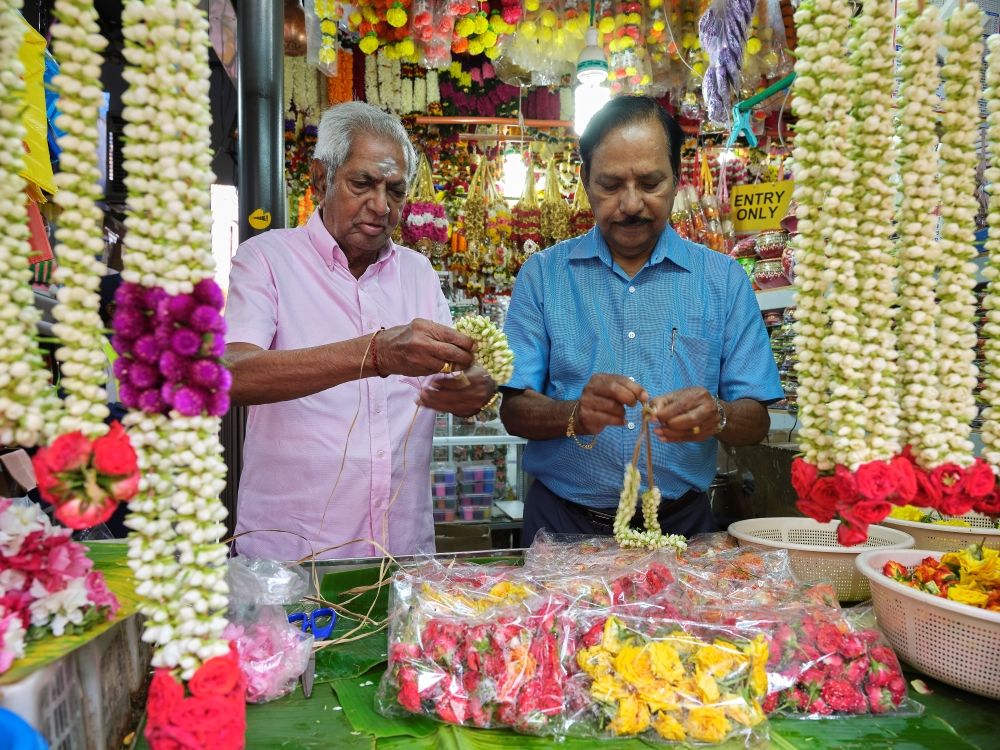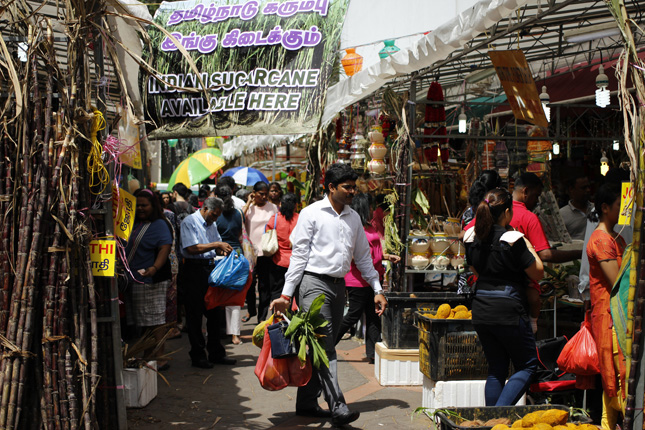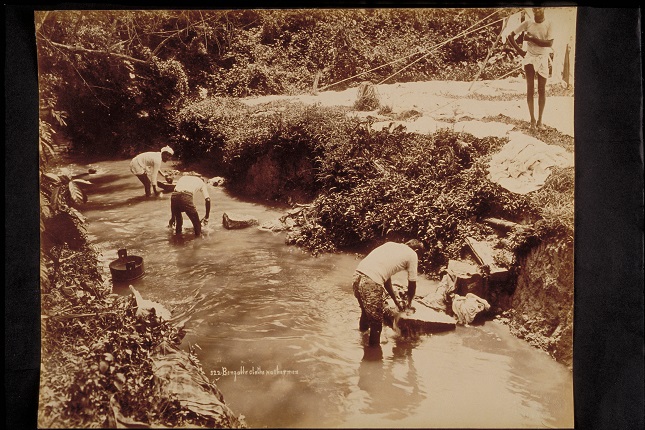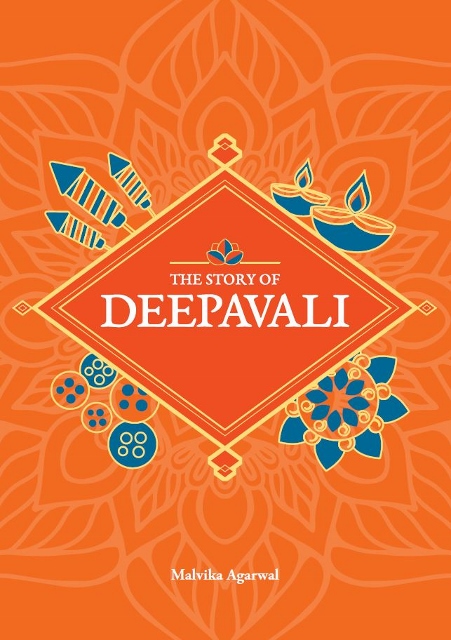This sari of plain weave in dark purple cotton is bordered in bright red. It is patterned in 'double ikat' (or patola) method with floral motifs in the centrefield in red, white and yellow. The side borders are covered with vertical bands in yellow, green, white and grey of varying widths. The two broad lateral borders are decorated with a row of tumpal motifs flanked on the inside by a band of geometric design. The ends of the sari have short fringes. Ikat, which literally means 'to tie', describes the resist-dye process by which ikat textiles are made. Vertical (warp) or weft (horizontal) threads are tied using strips of palm leaf or other similar material to prevent the dye from colouring certain reserved areas of the thread. By removing or re-tying the resists in between dyeing, multi-coloured patterns of great complexity can be achieved.Warp ikat is common among many tribal groups in Southeast Asia, suggesting its antiquity.This piece was made especially for export to Southeast Asia.




